Dear Annie, I was diagnosed with bladder prolapse. The doctor recommends surgery. I’d like to avoid surgery. Is there anything natural I can do?
Thank you, this is a great question. There are several natural solutions that can help reduce symptoms and support the abdominal region and pelvic floor.
About Prolapse
The Oxford Dictionary defines “prolapse” as “a slipping forward or down of one of the parts or organs of the body.” Bladder prolapse is usually grouped with other common prolapse types in the abdominal region, with the bladder, uterus, and colon most commonly effected. However, other organs and tubes in the abdominal region can also prolapse. Some of these include the small intestine, vagina and the urethra.
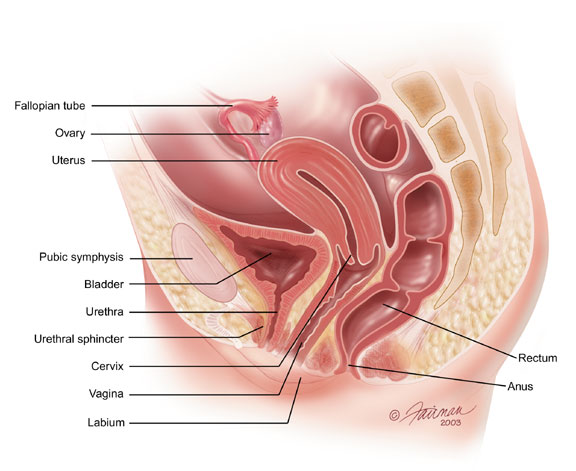
Healthy abdominal anatomy
Normally the uterus, bladder and colon are held in position just above the inside end of the vagina by a “hammock” made up of supportive muscles and ligaments, called the “Pelvic Floor.” Wear and tear on the muscles of the pelvic floor can allow the bottom of the uterus, the floor of the bladder, the rectum, or any combination to sag through the muscle and ligament layers.
The illustrations below show some what’s going on with common types of abdominal prolapse.
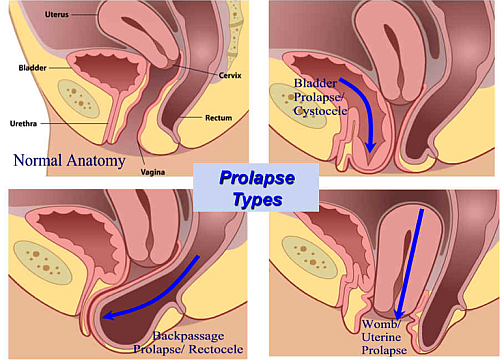
Abdominal organ prolapse is more frequent in women, although it sometimes happens to men. Recent data shows up to 50% of all women who have delivered children vaginally will at some point in their lives experience some type of prolapse. Most women are diagnosed between 50 and 60 years of age, when estrogen levels decline as a result of menopause. However, a prolapse can happen any time, especially after childbirth.
Symptoms of Abdominal Organ Prolapse
Symptoms vary depending upon which organ or organs are prolapsed. With a bladder prolapse you may experience a full feeling in the abdomen. You may feel like you’re sitting on a ball or have a wedgie. There may be urinary incontinence or leakage. Some people experience a chronic urge to urinate or a feeling of incomplete evacuation when finished. There may also be an increased occurrence of bladder infection. You may feel a bit of skin in the vaginal area or even see a part of the vagina coming out. Here is a general list of symptoms for most abdominal organ prolapse situations.
- A feeling of pressure or fullness in the pelvic area
- A backache low in the back
- Painful intercourse
- A feeling that something is falling out of the vagina
- Urinary problems such as leaking of urine or a chronic urge to urinate
- Constipation
- Spotting or bleeding from the vagina
Natural Solutions for Abdominal Organ Prolapse
As with most holistic therapies, strategies are always individualized. Suggestions are based on lifestyle, level of health, age, and symptoms. Each person is different and although they may have the same or a similar diagnosis, every person will experience their life in their own way. Abdominal Organ prolapse is a perfect example of this. In some ways I hesitate to go too far in-depth. But I want to give you the information you need to make healthy choices.
Keep in mind as we go farther that these are generalized suggestions. Listen to your body and your intuition and always include your health care provider in your treatment plan.
When working with Natural Solutions we will want to address the following areas:
- Relieve uncomfortable symptoms
- Support internal organs in their correct place
- Increase or maintain pelvic floor health or integrity
- Decrease or avoid abdominal pressure
Relieve Uncomfortable Symptoms/Support Pelvic Floor Health
Pessary
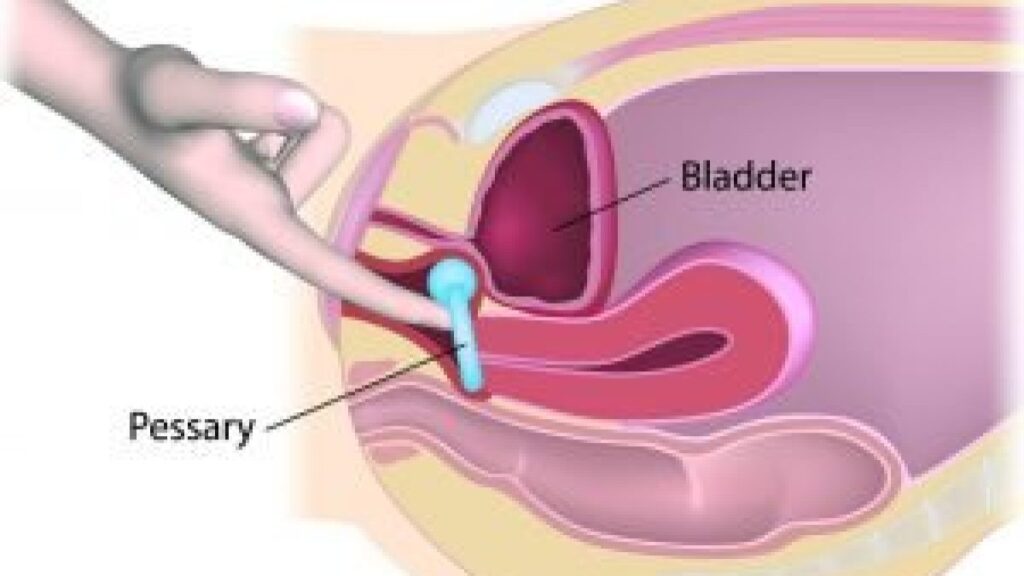
The medical profession often suggests a pessary for support of prolapsed abdominal organs. A pessary is a soft, flexible device that is placed in the vagina to help support the bladder, vagina, uterus, and/or rectum. Pessaries are made in many different shapes and sizes.
Talk to your Doctor if you feel this is a good solution for you. A properly fitted and inserted vaginal pessary can improve voiding, urgency, and incontinence for women with urinary incontinence and pelvic organ prolapse, no matter the stage. Click here for more information on pessaries. I have a very good friend who uses a pessary and is very satisfied with it.
Kegel Balls and Exercises
 I’ve personally had good luck with Medical Kegel Balls, available by Amazon. Insert the balls with lubrication starting about an hour per day and working up to where you’re comfortable. Medical Kegel balls support the bladder, vagina, uterus and rectum. They help with bladder control, urinary incontinence, recovery from childbirth, and rectal prolapse. They work with kinesiology and muscle control, enhancing pelvic floor strength, and for tightening and toning.
I’ve personally had good luck with Medical Kegel Balls, available by Amazon. Insert the balls with lubrication starting about an hour per day and working up to where you’re comfortable. Medical Kegel balls support the bladder, vagina, uterus and rectum. They help with bladder control, urinary incontinence, recovery from childbirth, and rectal prolapse. They work with kinesiology and muscle control, enhancing pelvic floor strength, and for tightening and toning.
Kegel exercise is often suggested to support pelvic floor health and decrease symptoms related to abdominal organ prolapse. Click here to go to an awesome video by Made for Women Workouts. It explains how and why to Kegel exercises. Go to Kegel Video.
Decrease or Avoid Abdominal Pressure
The pressure inside our abdomen rises when we place emphasis on the waist or abdominal muscles. To decrease or avoid increasing our abdominal pressure:
- Avoid heaving lifting. This might mean making more trips to the car to unload the groceries. When it is necessary to lift heavy objects, lift correctly using the legs and exhaling when lifting.
- Avoid Weight Gain. Obesity puts pressure on the abdominal organs.
- Avoid heavily pushing or bearing down in the abdominal region. Bearing down occurs in uncontrolled coughing, constipation, and exercises that strongly engage the core muscles.
Personalized Yoga Therapy
Recent academic studies confirm the beneficial use of yoga therapy to support or reverse mild to moderate abdominal organ prolapse. A 2018 study by the International Journal of Yoga Therapy found that the proper use of an ancient practice called mula bandha, when performed appropriately, in a personalized practice, significantly reduced the symptoms. The practice supported the body and offered a good therapy for women suffering from mild to moderate prolapse of the abdominal organs.
The key to success when using yoga therapy is a regular personalized practice, preferably with individual instruction. There are many yoga poses. Many tools of yoga. Some may be beneficial; others can cause more difficulty.
This is not the same yoga you’re getting in class at your local studio or gym. Yoga therapy is a specialized practice. Teachers or therapists work individually with you. Focus is placed on how to preform poses, breathing exercises, relaxation and lifestyle modifications to bring the best benefit. Each situation and each body is different. Muscle engagement, movement, breath and focus will be completely different for each person.
Click here for more information about Yoga Therapy and it’s benefits.
Beneficial Yoga Practices
With that in mind, let’s look at a few qualities we might focus on in a yoga practice designed to help bladder and other abdominal organ prolapse.
- Poses that bring symmetrical alignment to the body.
- Breathing exercises or pranayama that bring gentle attention to the diaphragm.

- Breath or gentle poses that relieve abdominal pressure, creating more space in the lower abdomen.
- Gentle inversions with the hips slightly raised.
- Practices that soften the abdominal area.
- Movements and exercises that strengthen the pelvic floor.
Tools or practices that may be detrimental
- Any pose or practice that brings tension or pressure to the abdominal area or pelvic floor. Those that focus on the core in an intense way.
- Extreme breathing practices such as fast, quick or intense breathing.
- Avoid breath of fire (kapalabhati) or any forced pranayama.
- Avoid jumping in your yoga practice.
- Any practice or pose that causes strain in the breath or holding the breath.
Click here to visit the IAYT website to find a certified yoga therapist in your area.
Herbal Treatments for Abdominal Organ Prolapse
Herbs take on a supportive role when working with bladder and abdominal organ prolapse. Herbal remedies can be used to prevent or treat infection, bring increased circulation to the area and to help tone and vitalize lax genitourinary organs. Herbs can also be used to support hormonal health especially for postmenopausal women and those in their childbearing year.
Preparations most suited for pelvic organ prolapse include Sitz Baths, Herbal Teas and Tinctures. Suppositories and salves or ointments are used by many.
The herbs I reach for the most when working with abdominal organ prolapse and bladder prolapse are:
Our Lady's Mantle (Alchemilla vulgaris)
One of my favorite women’s herbs. Lady’s Mantle is an astringent and anti-inflammatory herb with an affinity to the reproductive and genitourinary system. Its use is known to tone, strengthen and rejuvenate hollow organs in the body, including the bladder, colon and uterus. It has a strong reputation as a women’s rejuvenative herb and seems especially useful when there has been trauma to the pelvic organs.

Partridge Berry (Mitchella repens)
With an affinity to the urinary and reproductive systems, Partridge Berry is often used when there is loss of tone in the bladder. It is also used when there is difficulty urinating with a feeling of fullness and for treating urinary infections. Partridge Berry is historically used as a women’s herb. It has been used for 100’s of years to support, tonify and increase the function the vagina and uterus.
Indicated for abdominal organ prolapse, Blue Cohosh has an ability to increase the tone of lax abdominal organs and the uterus. It is especially useful when there is a heavy deep aching feeling in the legs and pelvis. Blue Cohosh may be helpful with mild pelvic inflammation and a dragging sensation in the pelvis. Small frequent doses are best.
Red Raspberry (Rubus idaus)
Red Raspberry helps Strengthen the reproductive and urinary systems. It increases fertility while toning and strengthening the uterus and bladder. Red Raspberry is also used to address frequent urination and bed wetting. Plus, it’s packed with tons of vitamins and minerals.

Raspberry leaves are best prepared in an infusion (a long steeped tea).
False Unicorn Root (Helonias dioica or Chamaelirium leteum)
This is a powerfully rejuvenating herb for the genitourinary system and a powerful women’s herb. It has long been used to balance and harmonize hormonal levels, tone the tissues, abdominal organs and much more. Take care, this plant is on the Plant Savers list as an endangered species so should only be used in small amounts as a synergist to the formula. It’s use is especially indicated when there is a heavy dragging sensation in the pelvic girdle with irritability and snappiness.
Horsetail (Equistetum arvense)
Supports regeneration and growth of bone and connective tissue. The herbs is useful anytime there is bone and connective tissue involvement. Including the nails, hair, skin and tooth repair.

Horsetail has an affinity to the urinary bladder and is useful in UTI formulas. To get the full benefits for connective tissue regeneration, steep the herb in hot water for a minimum of 20 minutes.
True Solomon’s Seal (Polygonatum biflorum)
Solomon’s Seal has a remarkable ability to restore the proper tension to ligaments, regardless of whether they need to be tightened or loosened. That, along with its tonifying effect on the reproductive system makes Solomon’s Seal a thoughtworthy choice for our prolapse formula.


Mullein Root (Verbascum thapsus)
The root of the Mullein plant strengthens and supports the musculature of the urinary system and pelvic floor. It is often used for inflammation of the prostate and for urinary incontinence caused by an overly relaxed urinary sphincter.
Damiana (Turna diffusa)
Damiana is an adaptagenic herb, (meaning that it helps the body and mind deal with stress). It has an affinity to the urinary, reproductive and central nervous systems.
Damiana helps tone urinary, reproductive, digestive, and respiratory organs and elements. It is further used to treat chronic urinary infections, incontinence, and prostatitis.
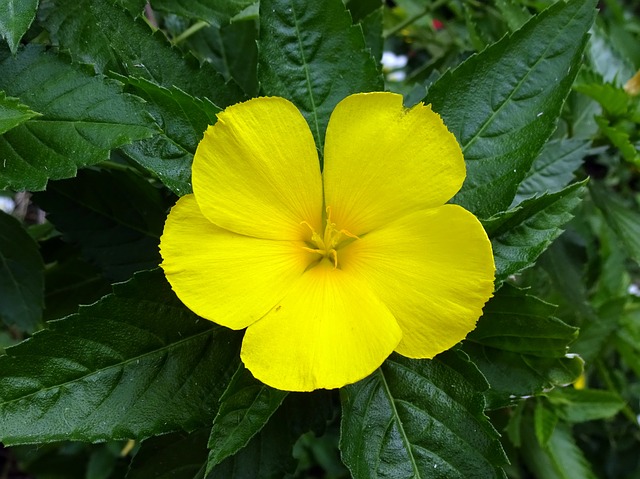
This herb is best taken for a limited time only. Try adding it to your formula for 2 weeks. Then take a 3 to 5-day break before adding it again.
Recipes
Prolapse Support Tea
Designed to support the structure and stability of the pelvic region and pelvic floor:
Mix dry herbs
-
2-parts Our Lady’s Mantle
-
2-parts Partridge Berry
-
1-part Damiana
-
1-part Red Raspberry Leaves
-
1-part Horsetail
Directions
Mix dry herbs together and store in an airtight jar in a dark place
To prepare the tea
- Place 2 oz herbs in 16 oz boiling water
- Cover and let steep for at least 20 min
- Strain Herbs
- Add water to correct liquid loss and maintain 16 oz. Drink 1/2 cup 4 times per day
For more information on making herbal teas and infusions click here.
Prolapse Support Extract
Mix individually formulated tinctures or liquid extracts.
- 1-part Partridge Berry
- 1-part Blue Cohosh
- 1-part Mullein Root
- 1-part True Solomon’s Seal
- ¼ part False Unicorn Root
Suggested Dose – 10 drops 4x per day for 1-2 weeks. If no progress is noticed, increase the dose to 30 drops 3x per day.
Further Reading
Affiliate Product Suggestions
The following are affiliate links. That means, if you purchase a product through one of the links, I make a commission at no additional cost to you. Rest assured I only suggest products I can support and feel confident about. Thank you for your support.
 Charlotte’s Web Infused Hemp Cream; A good friend of mine who’s dealing with urinary prolapse and lax vaginal tissue swears by this product. She says she uses it daily and has noticed the difference in her vaginal tissue. She says she feels the tissue tightening and the muscle tone strengthening. That’s a pretty good recommendation in my book.
Charlotte’s Web Infused Hemp Cream; A good friend of mine who’s dealing with urinary prolapse and lax vaginal tissue swears by this product. She says she uses it daily and has noticed the difference in her vaginal tissue. She says she feels the tissue tightening and the muscle tone strengthening. That’s a pretty good recommendation in my book.
Amazon offers several Kegal, Ben Wa Ball products. Each is made a little differently. These vaginal tools are suggested by doctors to improve muscle tone of both the vaginal muscle and pelvic floor.
 YSPOSS makes a nice set Kegel Balls Exercise Weights, Ben Wa Balls Kit. This set is made of stainless steel and has a variety of weight sizes for comfort and increased Women Bladder Control.
YSPOSS makes a nice set Kegel Balls Exercise Weights, Ben Wa Balls Kit. This set is made of stainless steel and has a variety of weight sizes for comfort and increased Women Bladder Control.
Adorime also makes a nice silicon covered Kegel Ball Exercise weight set for Bladder Control and Pelvic Floor Exercises. These are the ones I use and find them comfortable and effective.
Here are some links for Organic Ladies Mantle, Raspberry leaf, Damiana, Horsetail and True Solomon’s Seal Bulk herbs.
Thank you for taking the time to read my blog. It is my bliss to have the opportunity to share my experience and research with you. I hope you find it helpful. I would love to hear from you. Please contact me about your thoughts, ideas and experiences you’d like to share. I would love to hear about what your doing, what you’ve tried, what has worked and what hasn’t. Hope to hear from you soon.
Warm Blessings
Annie
References
 https://www.webmd.com/urinary-incontinence-oab/pelvic-organ-prolapse
https://www.webmd.com/urinary-incontinence-oab/pelvic-organ-prolapse
https://www.ncbi.nlm.nih.gov/pmc/articles/PMC5934946/
https://www.healthline.com/health/pessary#pessarycare
https://www.yogauonline.com/yoga-for-pelvic-floor-health/organ-prolapse-and-yoga
https://www.herbcraft.org/solseal.html
Stansbury, Jill E. ND; Materia Medica for Genealogical Complaints class notes, 2003 Southwest Conference on Botanical Medicines.
Frances, Deborah RN, ND, Therapeutic Uses of Ceanothus Spp, class notes, 2009 Southwest Conference on Botanical Medicines.
Disclaimer
The statements and ideas presented here are not intended to diagnose, treat, cure, or prevent any disease or condition. They have not been evaluated by the FDA. All ideas presented are for the sole purpose of education. To help you take control of your own health. If you have a health concern or condition, consult a physician. We suggest that you always consult a medical doctor before modifying your diet, using any new product, drug, supplement, or doing any new exercises.
These statements and products have not been evaluated by the FDA. They are not intended to diagnose, treat, cure, or prevent any disease or condition. If you have a health concern or condition, consult a physician. Always consult a medical doctor before modifying your diet, using any new product, drug, supplement, or doing any new exercises.
Herbs taken for health purposes should be treated with the same care as medicine. Herbal remedies are no substitute for a healthy diet and lifestyle. If you are serious about good health, you’ll want to combine diet, exercise, herbals, a good relationship with your doctor and a generally healthy lifestyle. No one of these will do it alone.
This information is designed to be used as part of a complete health plan. No products are intended to replace your doctor’s care, or to supersede any of his/her advice or prescriptions.


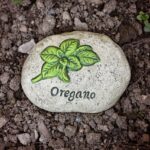









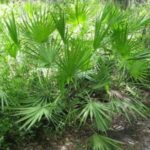










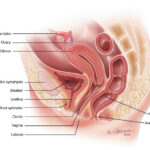





156861 143240What a lovely weblog. Ill surely be back once again. Please preserve writing! 76634
Pingback: My Homepage
Very informative article! Lots of great hints. Thank you!
Thank you, so glad you liked it was helpful.
Pingback: complaints dental service
Pingback: Rental cars Malta
Pingback: balsam konopny
Pingback: https://drywallrepairgreenvillenc.com
Hey 🙂 Just between, are some totally uncorelated websites blogs to ours, however, they are ultimate worth checking order out..
Which one’s are those?
Pingback: restoril 15 mg capsules for sale online overnight delivery
This is a appealing article by the way. I am going to go ahead and bookmark this post for my sister to read later on tonight. Keep up the good work.
My sister bookmarked this internet site for me and I have been reading through it for the past couple hours. This is really going to benefit me and my friends for our class project. By the way, I like the way you write.
Thank you. Glad it is useful
I will surely foreward this post to all of my pals! Its very respectable and a very decent check out!
Thank you for an additional good article. Exactly where else could anybody get that type of details in these a perfect way of writing? I have a presentation next week, and Im to the look for this kind of information.
Excellent pieces. Keep writing such kind of information on your page.
Im really impressed by your blog.
Hey there, You’ve done an incredible job. I will definitely digg it and individually
recommend to my friends. I am confident they’ll be benefited from
this web site.
Thanks for finally talking about >Natural Solutions for Abdominal Organ Prolapse –
Wonderment Gardens <Liked it!
I absolutely love your blog.. Excellent colors & theme.
Did you make this website yourself? Please reply back as I’m
planning to create my own personal website and want to know where you got this from or what the theme is
called. Cheers!
Thank you for your kind remarks. I had my website built by blue host
Wow that was unusual. I just wrote an incredibly long comment
but after I clicked submit my comment didn’t appear. Grrrr…
well I’m not writing all that over again. Anyway, just
wanted to say superb blog!
I have been surfing online greater than 3 hours nowadays, but I by no means found any attention-grabbing article like yours.
It’s lovely worth enough for me. In my view, if all
site owners and bloggers made good content material as
you did, the net will probably be much more useful than ever before.
Pretty great post. I simply stumbled upon your weblog and wanted to mention that I’ve
truly enjoyed browsing your blog posts. After all I will be subscribing for your feed and I hope you write once more very soon!
Very quickly this website will be famous amid all blog users, due to it’s good posts
Thank you!
Have you ever thought about adding a little bit more than just your articles?
I mean, what you say is fundamental and everything. But just imagine if you
added some great images or video clips to give your posts
more, “pop”! Your content is excellent but with pics and videos, this website could
certainly be one of the most beneficial in its niche.
Awesome blog!
Thank you for your kind suggestions. Glad you like the blog.
Pingback: Yoga and Uterine Prolapse - Wonderment Gardens
Pingback: Postpartum Prolapse - Wonderment Gardens
Hi Janae
Yes, the prolapse tea should be safe while breast feeding. Did you see the writeup on postpartum prolapse? You may find the sitz bath as or more effective depending upon your preferences. Here’s the link.
https://wondermentgardens.com/postpartum-prolapse/
Let me know if I can help further.
Blessings
Annie
thank you for such a fantastic site. Where else could anyone get that kind of information written in such a perfect way? I have a presentation that I am presently working on, and I have been on the look out for such information.
Great job, beautiful site with great informational content. This is a really interesting and informative post.